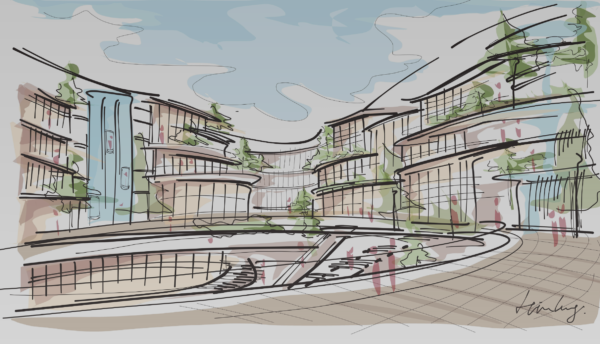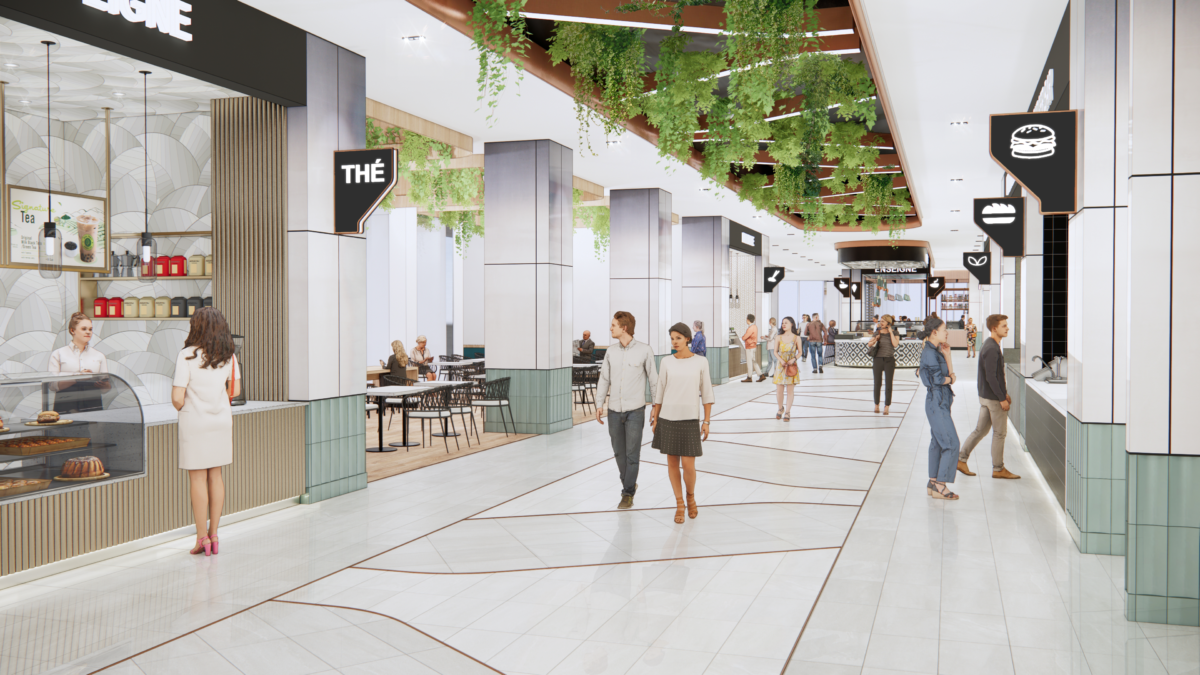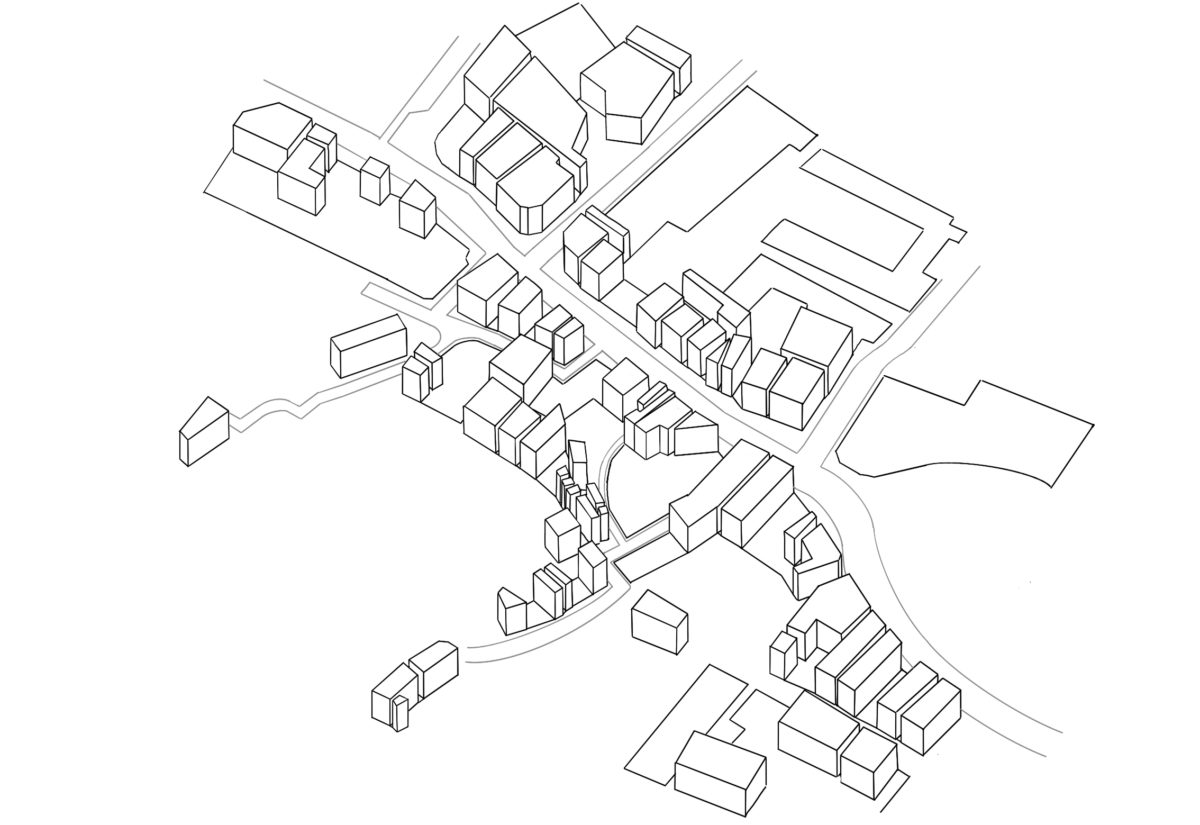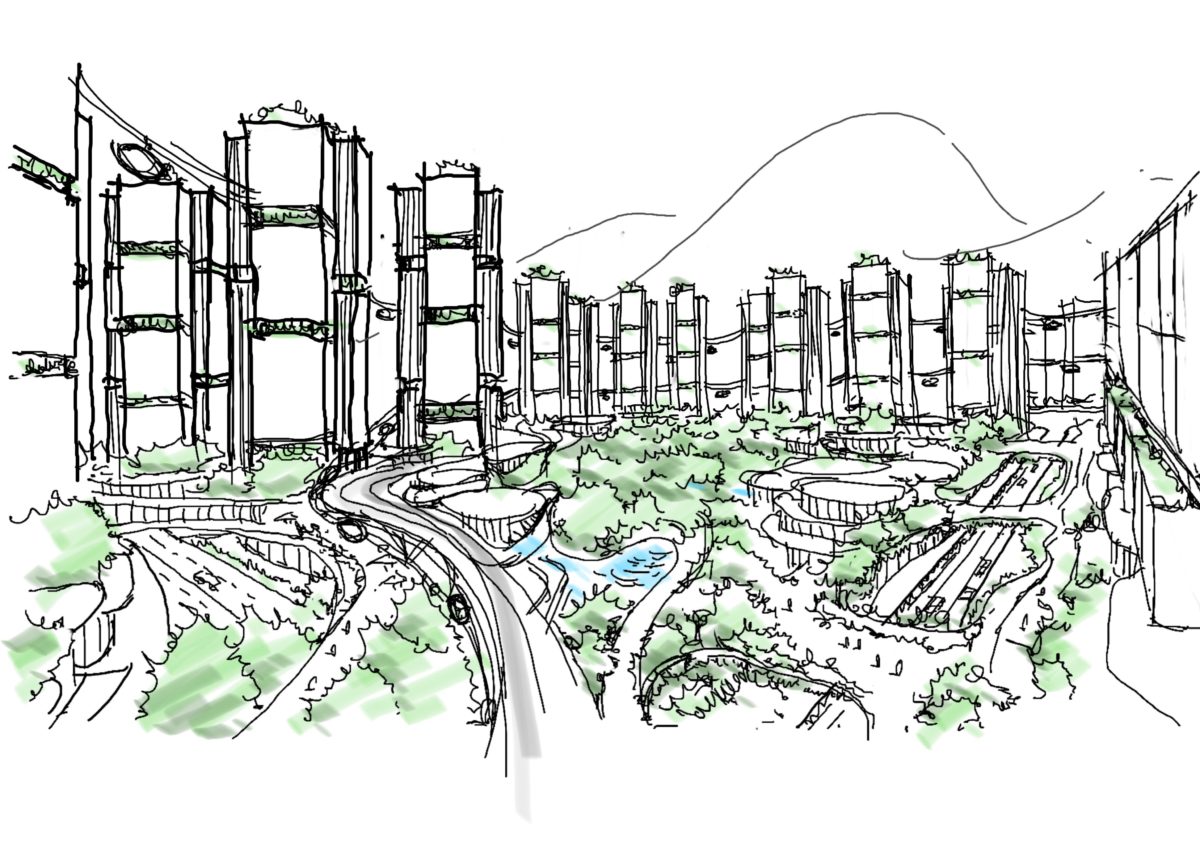This year to mark World Architecture Day, we invited some of our junior designers to tell us what inspired them to become architects and what they love most about what they do.
See what they told us below.
This year to mark World Architecture Day, we invited some of our junior designers to tell us what inspired them to become architects and what they love most about what they do.
See what they told us below.

Hina Liang, Architectural Designer, Hong Kong Studio
“Building renovation and urban renewal have become key development strategies in many first-tier cities, especially in the post-covid era, where the global economy is experiencing slower growth. Renovation and renewal offer more environmentally friendly and cost-effective ways to improve the living environment and inject renewed vitality. The focus of the renovation is to respect the fundamental architectural characteristics, while integrating new lifestyles and reconnecting with nature. This approach extends the building’s lifespan and creates greater economic value.”
Caleb Brown, Architectural Assistant, Newark Studio
“Artificial Intelligence (AI) is currently a hot topic, and its impact on our world — and our profession — is undeniable. The way AI is being integrated into the design process to accelerate iterative work is truly remarkable. Each year, when I attend the University of Nottingham end-of-year shows, I am struck by the continuous improvement of the quality of work. I am confident that the advancement of AI and our growing proficiency in utilising it will ensure this trend continues.”

Nutcha Somboonthanasarn, Architectural Designer, Singapore Studio
“I’m focused on adaptive reuse, which involves repurposing existing structures and giving them new life and function. This approach is increasingly important for long-term sustainability as it enables impactful changes in sustainability on multiple levels — environmental, economic, and cultural.
What makes adaptive reuse even more exciting is that it can start with small, localised projects but also scale up to influence larger urban areas, gradually transforming entire neighbourhoods while preserving their historical and cultural essence.”
Cristina Henriques, Assistant Designer, Montreal Studio
“Currently, I am very interested in the architecture and urban design in this country that is distinguished by a sustainable and innovative approach, integrating ecological materials and green technologies. Canadian cities are emphasizing inclusive and resilient public spaces, promoting soft mobility and the well-being of communities while celebrating local and indigenous heritage.”


Sila Cakir, Junior Urban Designer, London Studio
“At this critical juncture in the architectural profession, my thoughts are deeply shaped by the pressing need to address social equity and environmental sustainability in design. We are witnessing a paradigm shift where spatial practitioners must rethink not just how we design, but why and for whom we design. This extends beyond aesthetics to include more inclusive, responsive practices that consider the wider ecological and social impacts of architecture.
Key trends right now include an emphasis on regenerative design, where architecture not only minimises harm but actively contributes to repairing ecosystems and fostering biodiversity. Social equity is increasingly important, driving movements like inclusive design and co-creation with communities, ensuring that buildings and urban spaces respond to the needs of all, not just a privileged few.
In urban design, there’s a focus on resilient infrastructure and nature-based solutions, such as integrating green infrastructure to manage flooding, improve air quality, and foster public wellbeing. This, coupled with interdisciplinary collaboration, is reshaping the way we approach projects. Working across borders, like in the UK and the Middle East, requires a deep understanding of diverse cultural, social, and environmental contexts, and a sensitivity to how different regions address these challenges.”


Xianbin Ni, Senior Architect, Shanghai Studio
“When opportunities seem to be dwindling, young architects often find themselves at a loss for what to do next. In addition to continuously embracing technology in new fields like AI, it’s important to remember that our fundamental task, as architects, is to explore the basic organizational forms of future material spaces — this is the essence of architectural thinking and the real challenge we face.
In my view, the greatest disruption and challenge to modern urban forms will come from two areas: the revolution in urban transportation systems driven by autonomous driving technology, and changes in human-centred demands resulting from virtual reality. One will reshape top-down urban management, while the other will transform basic human needs from bottom-up.
Understanding these shifts and driving progressive urban transformation are key to achieving sustainable urban development goals. I believe this transformation is happening rapidly as seen in our Lingang Open Station TOD Project, which recently won the WAFX smart cities category. This reflects our forward-looking approach to the future urban city.”
Rawan Alalawi, Assistant Designer, Montreal Studio
“My design journey began with a love for transforming spaces to enhance how people feel and interact within them. Working at Benoy has been an exciting step, with each project offering an opportunity to learn, grow, and push my creative boundaries.”
Caleb Brown, Architectural Assistant, Newark Studio
“Architecture had always been my passion, but during my time at university, I found myself falling out of love with it — partly due to the pandemic. After completing my Part I degree, I took a gap year to volunteer at my local church in Nottingham. As the year drew to a close, I realised how much I missed architecture and wanted to experience working in the industry. I joined Benoy in September 2022 and rediscovered my passion for architecture. Now, I am on the L7 Apprenticeship with the University of Nottingham and about to start the second year of my Part II master’s program.”


Jake Moss, Architectural Assistant, London Studio
“The most exciting thing about what I do is working with so many like-minded designers who are so supportive and passionate about what they do. It fosters such a great environment for design and collaboration across projects. Being able to see and work on all parts a project is also very exciting, as you can understand how a building is conceived and watch that process evolve into a finalised and refined design.”
Nutcha Somboonthanasarn, Architectural Designer, Singapore Studio
“The most exciting part of my work is the challenge of solving design problems. Every project presents its own set of obstacles, and figuring out what excites me most is creative; functional solutions feel like solving a complex puzzle.
When things get difficult, collaborating with others often brings fresh perspectives, making the journey from concept to completion even more rewarding.”
Cristina Henriques, Assistant Designer, Montreal Studio
“I’m excited about is the challenge of transforming spaces into captivating environments that resonate with both clients and customers. I inspiration in how design can influence mood, behavior, and brand perception, especially in boutiques and restaurants where aesthetics plays a key role. The ability to blend creativity, functionality, and brand storytelling, while working with unique materials, layouts, and lighting, keeps the field dynamic and allows me to continuously push boundaries in creating memorable, immersive experiences.”
Hina Liang, Architectural Designer, Hong Kong Studio
“What excites me most is designing projects that are timeless and integrates man with nature. Design is about creating delicate, lasting beauty, not just an eye-catching moment. This approach is both attractive and practical as it takes a long-term view of architecture. The integration with nature blurs the boundaries between architecture and landscape, allowing them to complement each other. It is like walking in a painting. You can move slowly and fully experience the space, appreciating every detail as part of a larger, harmonious whole.”


Xianbin Ni, Senior Architect, Shanghai Studio
The biggest challenge, in my opinion, is how architects relate to the world. In the face of rapid technological changes and technological advancements, architecture often remains relatively unchanged. This is both a charm and dilemma of architecture: Are we disconnected from the world? How could we better connect with each other?

Hina Liang, Architectural Designer, Hong Kong Studio
“Norman Foster and Thomas Heatherwick inspire me a lot. They design architecture as products. While delivering innovation, it also offers meticulous detailing and timeless beauty. They make architecture a topic of conversation around the world and keep architecture in the spotlight, which, in turn, extends the life of the building. This approach to creating classic, enduring design is also a sustainable strategy for urban architecture.”
Sila Cakir, Junior Urban Designer, London Studio
My work is deeply inspired by the idea that design can act as a mediator between humans, non-human beings, and natural systems. Thinkers like Donna Haraway have profoundly influenced my understanding of the interconnectedness of all life forms. Her concept of the Chthulucene—which emphasises entanglement, multispecies coexistence, and ecological responsibility — resonates with my approach to design. Haraway’s work challenges us to rethink human-centered narratives and encourages an architecture that acknowledges and supports the intricate relationships between people, animals, and the environment.
Jake Moss, Architectural Assistant, London Studio
I am inspired by the people who will interact with the spaces I design and create. Understanding their needs, habits and aspirations makes the design process meaningful. Architecture is ultimately about people and creating something that improves their daily lives, sparks joy or makes them feel connected more to their surroundings is what drives me.
Rawan Alalawi, Assistant Designer, Montreal Studio
I’m inspired by innovative designers who push boundaries and create impactful spaces that improve people’s lives.













